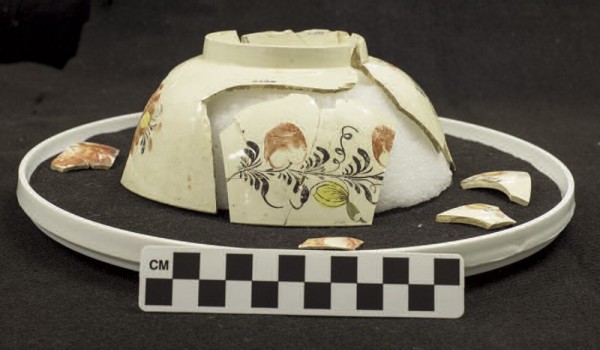
Punch bowl, probably Derby, England, 1765–1772. Creamware. D. 6". (Courtesy, The George Washington Foundation; photo, John Earl.) Decorated with distinctive overglaze enamels, this bowl was recovered from the cellar of the Washington house.
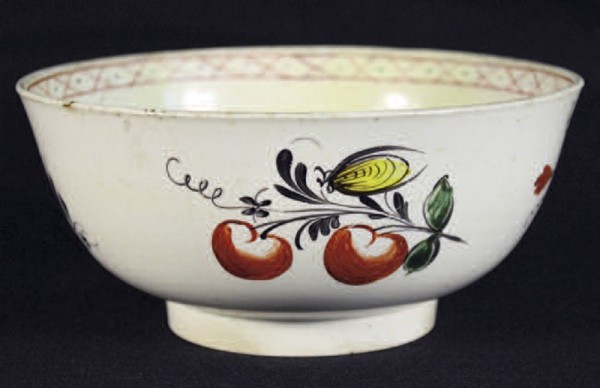
Punch bowl, probably Derby, England, 1765–1772. Creamware. D. 6 1/4". (Courtesy, Kimberley Overman; photo, Zac Cunningham.)
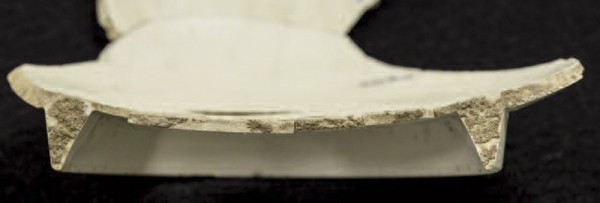
Cross section of the base of the bowl illustrated in fig. 1. (Courtesy, The George Washington Foundation; photo, John Earl.) Glue residue is clearly visible on the edges of the break.
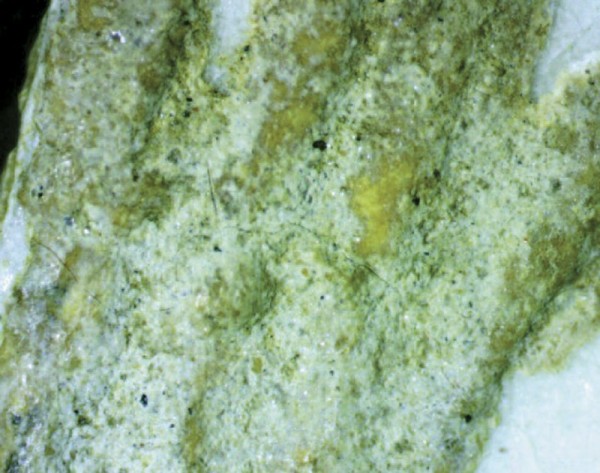
Microscopic view of glue residue on the bowl illustrated in fig. 1. (Courtesy, Dovetail Cultural Resources Group.)
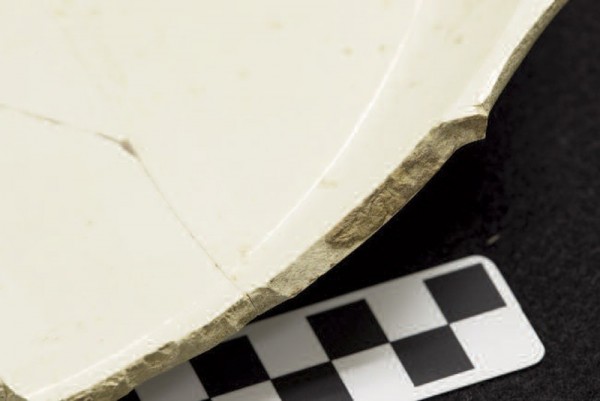
Close-up of a platter fragment, England, 1765–1772. Creamware. (Courtesy, The George Washington Foundation; photo, Zac Cunningham.)

Close-up of a teapot lid, England, 1765–1772. Creamware. (Courtesy, The George Washington Foundation; photo, Zac Cunningham.)
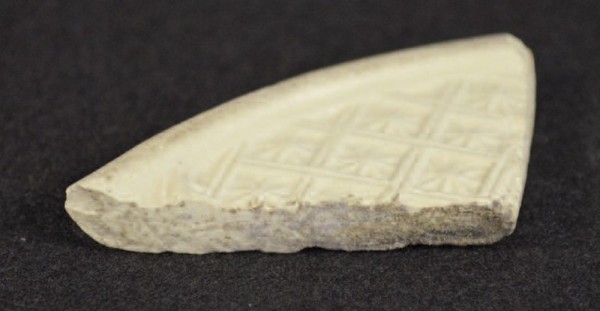
Close-up of plate rim fragment, 1750–1760. White salt-glazed stoneware. (Courtesy, The George Washington Foundation; photo, Zac Cunningham.)

Mug, England, ca. 1820. Pearlware. H. 2 3/8". (Courtesy, Laura Galke; photo, Zac Cunningham.) Antique mug mended using historic glue recipe.
